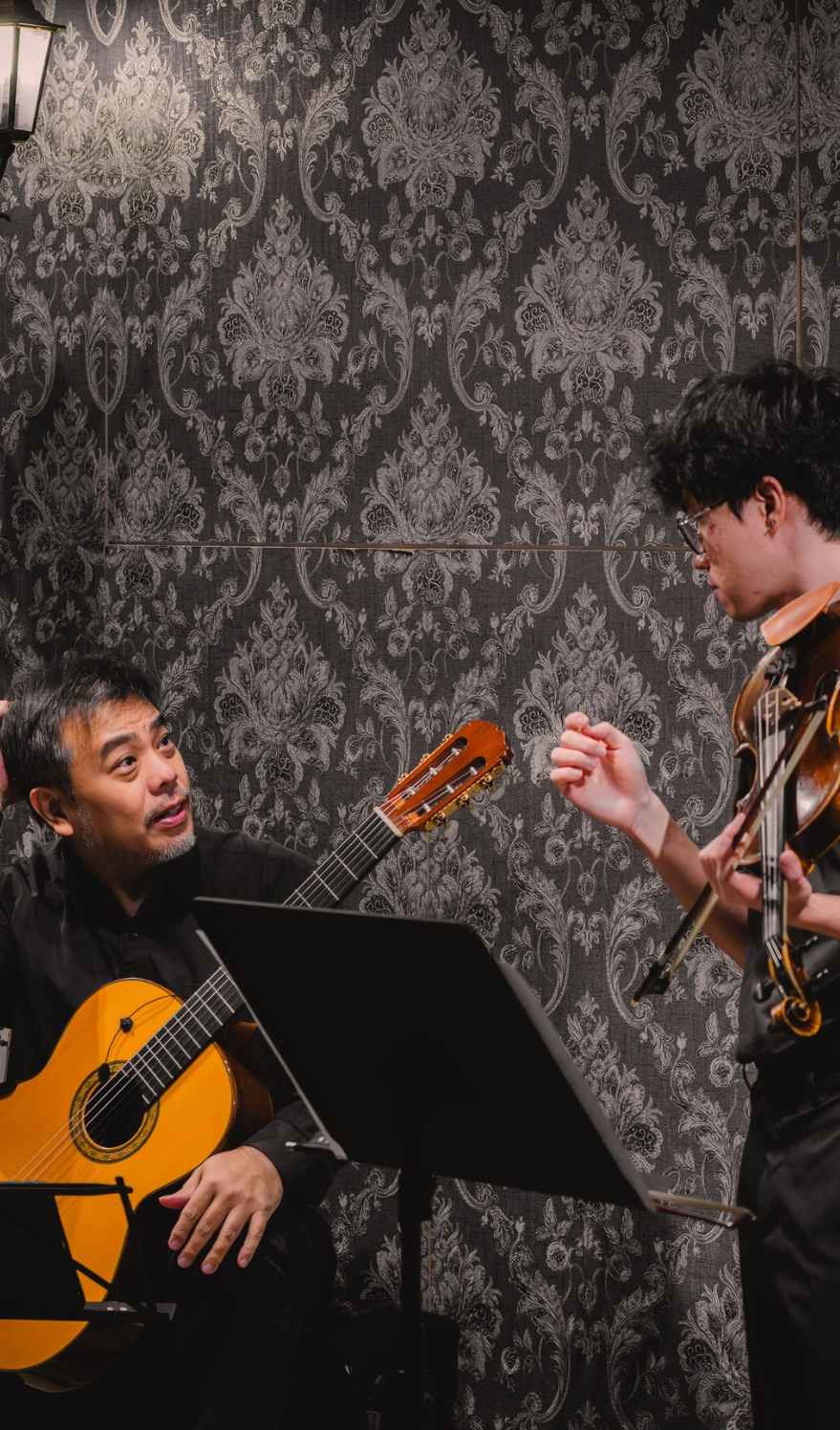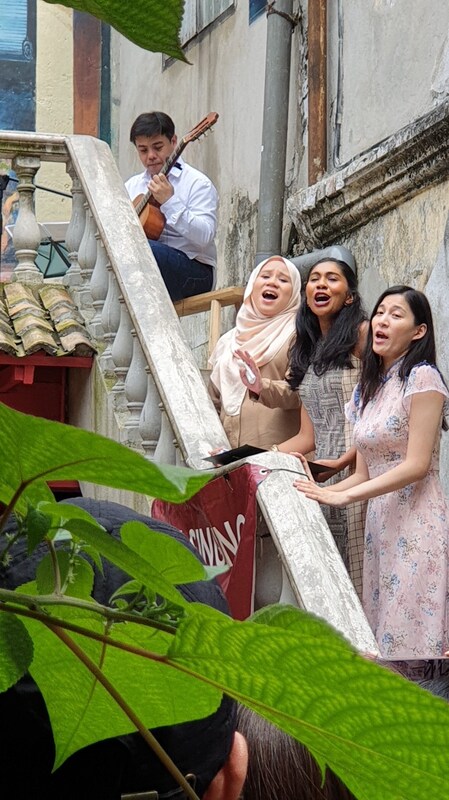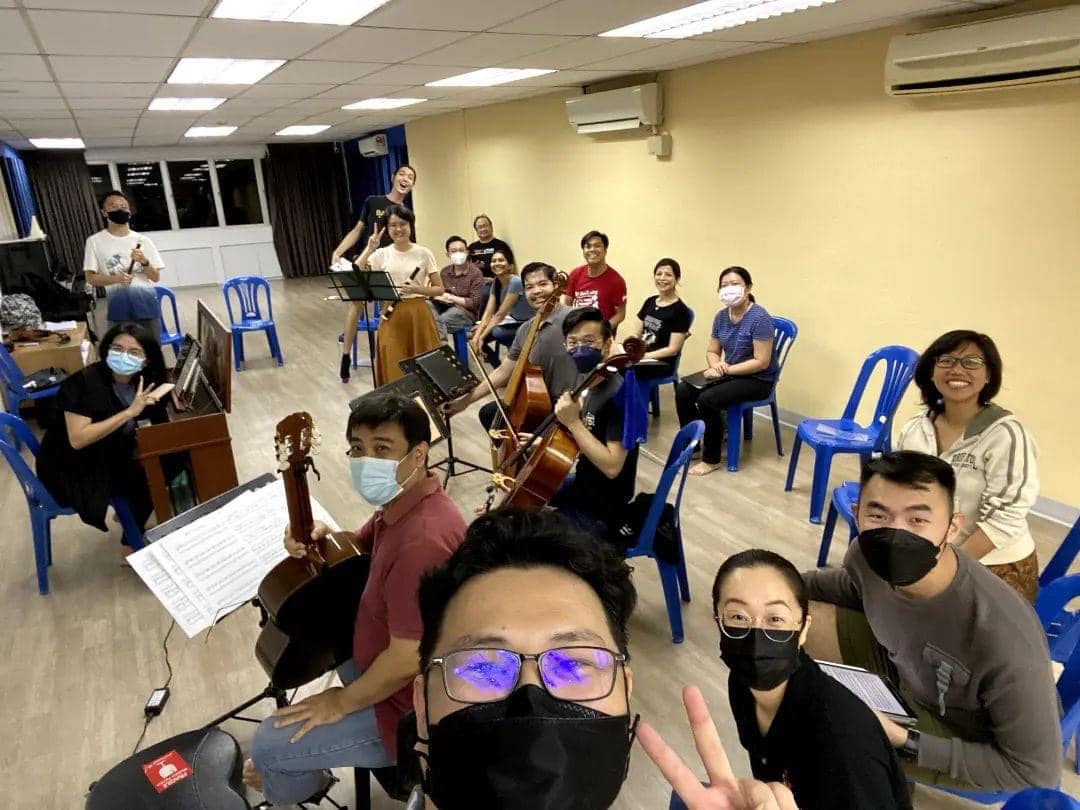To me, seeing students grow, from struggling with technique to analysing patterns, finding solutions and refining their approach – undoubtedly fulfilling for me in my role as teacher. When veteran Malaysian guitarist YS Tang was a teenager, he thought the classical guitar would help him escape from his textbooks, which he dreaded.
“My first guitar teacher encouraged me to pursue my musical training, and at that time, playing the guitar was the best thing I could do,” explains Tang, who concedes that he was not particularly gifted when it came to his studies. “I was sub-par academically and I thought avoiding books would be my best option.” But little did he know then that there would be no reprieve from reading. “I would find out later that I still had to read books,” says Tang, about things such as music history, which, thankfully, he enjoys. “I guess nothing happens abruptly. Rather, the interest and curiosity of wanting to find out more about music and not just about the guitar grew over time. I remember after I started learning harmony, I began to pay attention to the development of tonality in music, and little by little, I became exposed to more music literature. It is still growing as we speak.” Tang started learning the guitar when he was 16, signing up for a course at Yamaha Music School with two high school friends. “When my friends stopped their lessons, I stopped, too, but I continue to play and learn famous guitar pieces on my own,” says Tang. WENT MIA @ MALAYSIAN INSTITUTE OF ART He later enrolled in the Music Department of Malaysian Institute of Art (MIA) majoring in the classical guitar under the tutelage of Ms. Małgorzata Skrodzka-Ng. Tang did not complete the course at MIA, choosing instead to continue guitar and composition lessons while learning harmony and counterpoint privately, he says. “I was not interested in obtaining any certifications, so I skipped some subjects which I thought were unnecessary. I was a disrespectful young kid back then,” he explains. However, Tang was talented enough to further his education in Texas – he secured a place at Del Mar College and then at Texas A&M University-Corpus Christi on scholarships. He studied under Philip Hii, who inspired him and encouraged him to listen to music other than that written for the guitar. He also took a year of lessons with Tan Wann-Dar, who has been a good friend since. Upon getting his bachelor’s degree at Texas A&M University-Corpus Christi, he went on to study with Dr. James Bogle at Texas Tech University, also on a scholarship, and graduated with a master's degree in music performance. FALSE START Today, Tang performs regularly and also teaches the guitar in Malaysia, where he probably hopes his students are less disrespectful than he was. But it was a good 15 years after obtaining his master’s in music performance before he kick-started his music career. “I tried to build my studio and played recitals in several cities. But I felt that it was not going anywhere. Again, I was young and didn’t know how much time it takes to build a career,” says Tang explaining his decision to quit early as a musician. The other reality was that he was also not making enough. “So, I took the chance to venture into other areas,” he adds. He returned to the guitar only in 2017, and a year later, made his first stage appearance after his 15-year absence. He remembers that performance in April 2018 as his worst. “It was a performance for the launch of L. Luthier Guitars. I was so nervous while backstage and I hated myself for making the decision to return to the performance scene. There were a few obvious slips during that performance, though it was mostly OK. I mean, most of the notes were plucked correctly. However, I could not breathe, I was merely sitting in front of a hall of audience while trusting my fingers to run on auto-pilot. I was totally unprofessional,” he confesses. Tang has moved on since, performing not only solo but also with several ensembles. The former bad student has completed his return and is now a master. “I enjoy playing chamber music, particularly early music,” he says. “The challenge of playing in an ensemble is that I have to know my part very well, and at the same time listen to others as well. I work with a few groups of musicians I work with and we don’t rehearse together a lot. Most of the work is done on our own. We meet only once or twice and then it’s showtime. For bigger or more complicated work, we may have up to five rehearsals, for example, for Bach’s Cantatas).” As a musician, he enjoys a richer texture of music, performing in a group. “The music is so much richer, even if it’s early music like John Dowland or Henry Purcell. Their texture may be light, but since we have different instruments and voices, the interaction between the musical lines are just so delightful.” And never mind if he has to work a little harder. “Most of the chamber work I performed so far did not have parts written out for the guitar, so I had to arrange my own parts,” he adds. Does he prefer the one over the other? Solo over group? “I love them both,” says Tang. “I treasure the experience of performing in an ensemble even more when I get to play with very good musicians because I am learning so much from them.” He also has a solo programme called CafeMusic, which he feels is an opportunity for him to bring the classical guitar to more people. STUDIO DREAMS “Classical guitar music is very suitable for cafes or in a salon setting. Music by Spanish composers Francisco Tarrega and Issac Albeniz, and most South American solo guitar music is highly suitable. I also play some Bach in cafes, too. Bringing guitar music closer to more people, be it in cafes / plazas / shopping malls, is surely promoting the guitar to the public and I don’t mind doing that at all,” he says. Aside from increasing performance opportunities, Tang also hopes to be able to teach more. “I wish to grow my studio, but I still have a very tiny one now, since I started (or rather restarted) taking students in 2017. So I guess my studio is relatively new.” There is a joy in teaching, too, which he relishes. "To me, seeing students grow, from struggling with technique to analysing patterns, finding solutions and refining their approach – undoubtedly fulfilling for me in my role as teacher. Lessons are more than just notes on the guitar. The time spent with students should be spent guiding them on how to communicate through their instrument and to communicate within themselves – from mind to fingers. “The guitar is only a medium of communication.” PREPARING FOR A SHOW Planning a new, or partially new programme is really exciting. For me, knowing my limitations, ensuring that I have the technical proficiency in the pieces I choose, is vital. And sufficient preparation is a must. FAVOURITE GUITARISTS I highly admire Lorenzo Micheli and Anton Baranov, and many younger players, too. TANG'S GUITAR I am currently using Sakurai-Kohno Professional J. I am more familiar with Kohno-inspired guitars because I played a Kohno 30 when I was 16 years old – it was my teacher's guitar, and till now, the sound and vibration, and smell of the instrument still lingers in me. EXPERIENCE WITH GUITARS These are the guitars I have played and liked: Eric Sahlin, Robert Ruck, Kohno Maestro, Greg Smallman, John Ray, Sergio Abreu. To my recollection, Eric Sahlin has the quickest response and is the easiest to play. Next is Smallman, heavy on the lap but easy on the fingers. The Ruck (I think it was a 2001 model) has a deep and punchy tone, but not so easy on the left hand. John Ray is quite good for both the touch and response, though maybe a little lacking in power. Abreu is clean and balanced, nice on the fingers, but not very powerful either. As for the Kohno Maestro, it's just very sweet and very easy to play. ADVICE TO STUDENTS Play it slowly, enjoy the different kinds of sounds of the guitar because the guitar is a very sensitive instrument. For students who want to be a little serious, learn to plan and analyse fingering, practise small sections, and very slowly. Do more etudes and avoid big concert works if you are not ready technically. |
YOU MAY LIKE
|
OPEN STUDIO
The Classical Guitar Life A 45-minute showcase followed by a short talk + discussion on how the guitar can be a rewarding hobby. Includes explaining matters such as changing strings, guitar cost and maintenance. This programme is suitable for those interested in the classical guitar, including young adults. Registration opens now. |





